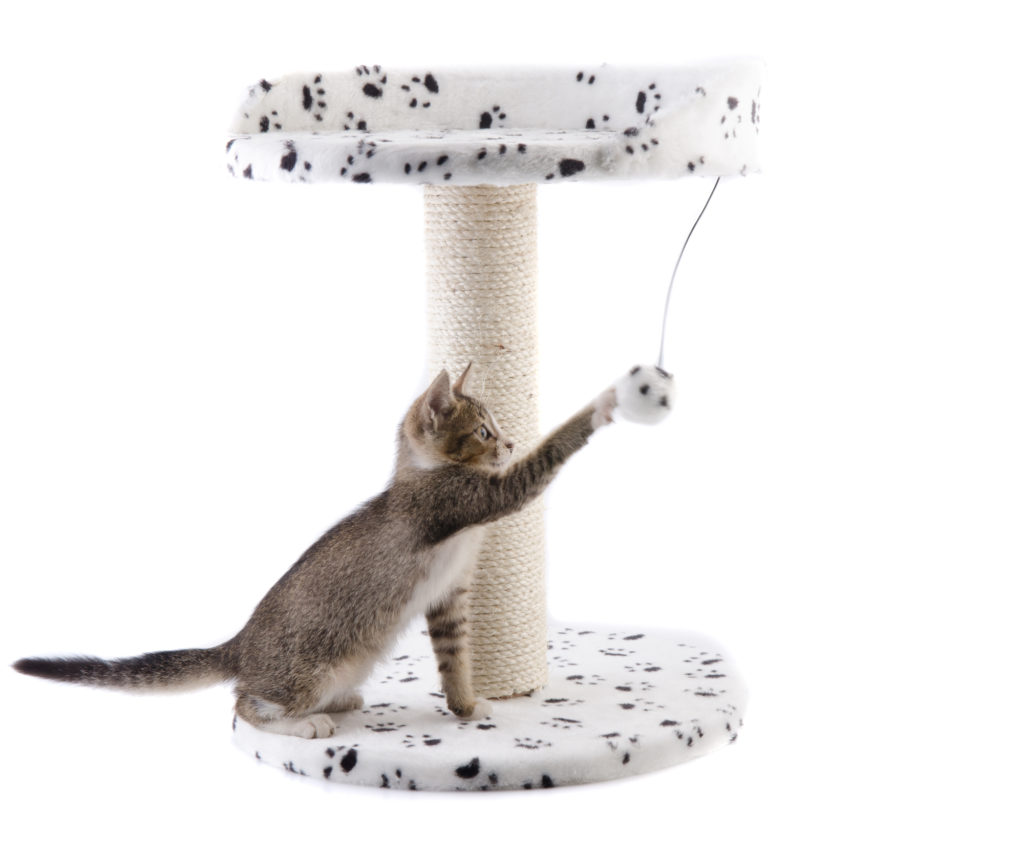Cats do many weird and amusing things, often with the energy of a whirlwind! One particularly comedic behavior that you might see in a cat is the act of chasing its tail, often at high speeds and vigor.
Even from kittenhood, cats can exhibit these actions, much to the confusion of their owners. So why do cats chase their tails? Is it something to worry about? Read on to find out!
Why Do Cats Chase Their Tail?
There are lots of potential reasons for a cat to chase its tail, including stress, play instincts, and health problems. These reasons range from mundane and harmless to more worrying conditions that may need addressing.
Determining the reason for your cat’s tail-chasing behavior is crucial in understanding those actions.
7 Reasons Why Cats Chase Their Tail
1. Play and Prey Instincts
A sudden moving object can trigger a cat’s prey drive, even when that object is merely their own tail. The back-and-forth flicking of a tail can be enough to make a cat want to pounce, as silly as it seems!
This is all in good fun and is not necessarily a bad or harmful thing, especially in kittens.
2. Boredom
Have you ever fidgeted with your hands or hair when you were bored? Tail-chasing can be kind of like that.

A cat who is under-stimulated and doesn’t have any games or toys at its disposal may attempt to play with its tail just to ease boredom.
3. Stress
If a cat is stressed out, they often perform a series of behaviors that will help to unleash or spend nervous energy.
Aggressively or wildly playing with their own tail can allow a cat to express its feelings and frustrations for any given reason.
If you think this is the case, pay attention to your cat’s other recent behaviors. Stressed-out cats tend to change their habits almost overnight!
4. Feline Hyperesthesia Syndrome
Feline Hyperesthesia Syndrome, or FHS, is a rare OCD-like disease where the nerve endings of a cat’s body are highly reactive and hypersensitive. This causes behaviors that are repetitive and compulsive, including tail chasing.
In addition, cats with FHS have front tail portions that are ridiculously sensitive. This prompts them to want to run, attack, or bite at it because of the discomfort that it is causing.
If this sounds like your cat, schedule an appointment with the vet!
Especially if this is accompanied by unusual loudness, hyperactivity, dilated pupils, and an obsession with their tail.
5. Stud Tail
Stud tail, or supracaudal gland hyperplasia, is an ailment where the glands at the base of the tail of a cat produce excessive amounts of sebum.
This causes a build-up of sebum at the tail base, leading to oily and matted fur that is irritating, uncomfortable, and itchy.
Cats will chase their tail to untangle or relieve the itchiness. Stud tail needs to be treated immediately to avoid infection.
6. Other Health Problems
Numerous other health problems can lead a cat to chase its tail.
For example, allergies can cause an overly itchy tail that a cat feels the need to bite and scratch to relieve. Food-related allergies may manifest in various parts of a cat’s body, but extremities like the tail are common targets.
Infections are also a common reason for cats to chase their tails. This is a serious matter that needs immediate vet attention!
If your cat has recently had open wounds on its tail and is now aggressively chasing its tail, that could be a sign of infection.
7. Fleas
Flea bites are extremely itchy and many adult fleas tend to start colonies in the fur and skin of cats, especially right at the tail base.
When they bite into the skin, they lay eggs and build nests, and this parasitic infestation can have severe negative effects on a cat.
To scratch at this spot, cats will often chase their tails to “catch” the location, as it’s hard for cats to reach their tail bases.
Why Do Cats Get Mad At Their Tails?
A cat getting mad at its tail by biting it or being aggressive with it could have a tail infection, allergy, or other medical issues.
There’s no harm in just fun, playful chasing most of the time, but if aggression is involved in your cat’s tail-chasing behavior, you need to see a vet to rule some possibilities out.
How To Stop Your Cat From Chasing Its Tail?
If you’d like your cat to stop chasing its tail, you have to address the root cause directly.
But, to begin with, do not react strongly to the tail-chasing behavior. This could only reinforce the action by signaling to your cat that doing this behavior will garner attention.
Next, you’ll want to avoid forcefully stopping your cat with physical activity, such as holding them down. Doing this might stress them out and intensify their desire to chase their tail.
So, what should you do instead?
The first thing to consider is redirection. Sometimes, simply bringing your cat’s attention elsewhere to something more playtime-appropriate can already fix the worst of the behavior.
Use a laser pointer or loved toy to grab your cat’s attention and direct it to the new input.
Next, consider the reason for the behavior and solve that.
For example, if your cat is stressed out, try and create a more calming environment. If your cat may have a medical condition, speak to a vet for assistance and treatment. If you think itchiness may be to blame, check your cat for allergies or groom them more frequently.
In other words, fix the actual cause to stop your cat from chasing its tail!
Should I Be Concerned About My Cat’s Tail-Chasing?
Kittens chase their tails all the time, and for the most part, this is normal behavior if it’s not aggressive. However, adult cats rarely ever chase their tails without a good reason.
Sometimes, that reason is just stress or boredom and you can fix that easily. Other times, though, it’s a sign that medical assistance is needed.
It’s a good idea to get your adult cat checked for tail-chasing behavior by a vet to make sure everything is okay. While some cats do retain the play style from kittenhood, it’s definitely worth investigating.
In most cases, it does communicate a need of some sort, even if that need is relatively simple!
Conclusion
Cats chase their tails for all sorts of reasons. While most kittens do this harmlessly for fun, most adult cats do this to indicate a need.
It may be a need for more entertainment or a calmer environment. Or it could be a need for medical help due to an infection, disorder, allergy, or flea trouble.
Regardless, addressing the reason behind your cat’s tail-chasing behavior is important for their health!

